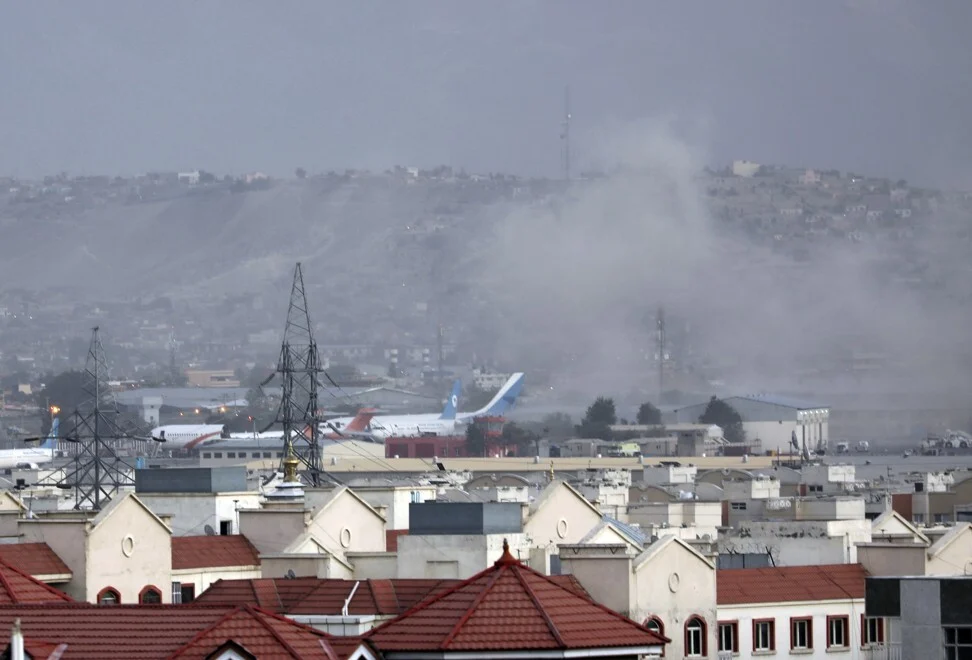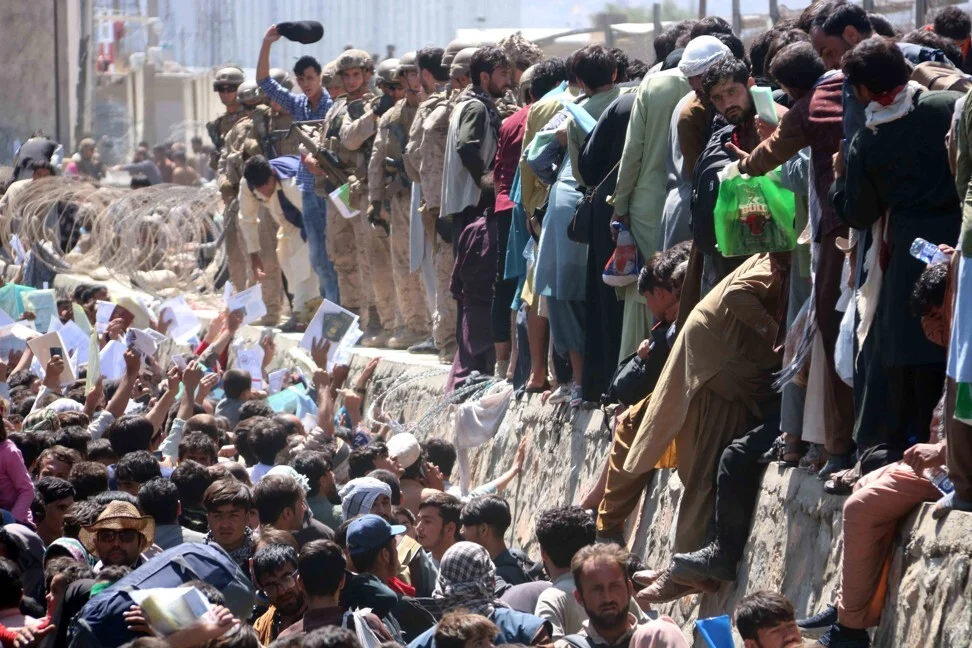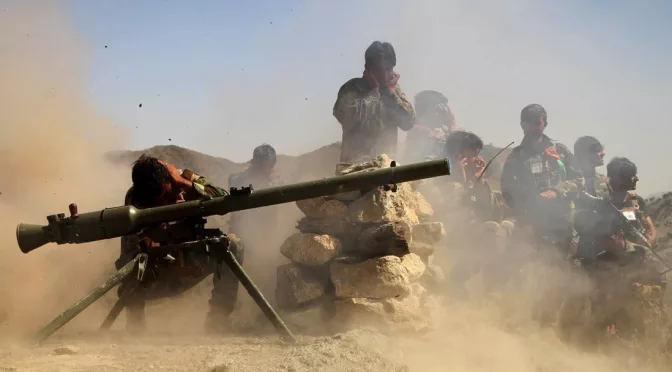Global concern has grown over Islamic State Khorasan (Isis-K), the Isis affiliate in Afghanistan, amid reports the group is believed to be behind the August 26 blasts outside Kabul airport.
Despite years of military efforts by the US-led coalition, Isis-K has survived to launch a massive new assault amid the withdrawal from Afghanistan by the US and other Nato partners, and as the Taliban returns to power.
US President Joe Biden cited the threat of Isis in maintaining an August 31 deadline for pulling out American forces from Afghanistan. He blamed the offshoot group for the attacks, which included a suicide bomber who slipped into the crowds of Afghans outside airport gates controlled by US service members.
Here’s a look at the deadly group and the threat it poses internationally.
What is Islamic State Khorasan?
Isis-K, founded in 2015, is the branch of Islamic State in the Khorasan region, which historically covers parts of Iran, Afghanistan and Pakistan.
It was formed initially by militants from Pakistan along with disaffected Taliban members, and operates mainly in the north and east of Afghanistan, close to Kabul.
The group has also attracted a significant cadre from the Islamic Movement of Uzbekistan; fighters from Iran’s only Sunni Muslim-majority province; and members of the Turkestan Islamic Party comprising Uygurs from China’s northeast. Many were attracted to Isis’ violent and extreme ideology, including promises of a caliphate to unite the Islamic world, a goal never espoused by the Taliban.
A recent UN Security Council report suggested there were between 1,000-2,200 Isis-K fighters, down from a peak of between 5,000-6,000 in 2016, but their ranks may have been swollen in recent weeks as the Taliban’s advance saw prisoners freed across Afghanistan.

What is its relationship with the Taliban and al-Qaeda?
Isis-K and the Taliban are enemies, due to the Isis affiliate’s more extreme version of Islam. The two groups have previously fought over control of territory in Afghanistan.
Taliban insurgents at times joined both the US and US-backed Afghan government forces to rout Isis from parts of Afghanistan’s northeast.
After the Taliban took control of Afghanistan, it reportedly executed a senior Isis-K commander who had been imprisoned in Kabul.
The conflict between the two groups means that Isis-K is less likely to be bound by the Taliban’s agreement with Western forces to allow evacuations to continue from Kabul airport.
Similarly, the relationship between Isis-K and al-Qaeda is unlikely to be one of straightforward cooperation despite their similar beliefs, reflecting broader conflict between al-Qaeda and Isis globally.
A US Defence Department official, speaking to AP on condition of anonymity because he was working covertly, said previously that the Trump administration had sought its 2020 withdrawal deal with the Taliban partly in hopes of joining forces with them against the Isis affiliate. The administration saw that group as the real threat to the American homeland.

Why is the Isis-K so dangerous?
While the Taliban has confined their struggle to Afghanistan, Isis-K has embraced Islamic State’s call for a worldwide jihad against non-Muslims.
The Center for International and Strategic Studies, a US think tank, counts dozens of attacks that Isis-K fighters have launched against civilians in Afghanistan and Pakistan.
The group is thought to have carried out a devastating attack on a maternity hospital in Kabul in May 2020, killing 24 people, including newborn babies and mothers.
It has also claimed responsibility for several other attacks in Kabul, including an assault on the city’s university in November 2020 and rocket attacks in the same month.
Isis-K also claimed responsibility for an attack on Jalalabad prison last August.
Though the group has yet to conduct attacks against the US homeland, the US government believes it represents a chronic threat to US and allied interests in South and Central Asia.

What will be the effect of the US withdrawal?
Even when the US had combat troops, aircraft and armed drones stationed on the ground in Afghanistan to monitor and strike Isis, militants were able to keep up attacks despite suffering thousands of casualties, said analysts Amira Jadoon and Andrew Mines in a report for West Point’s Combating Terrorism Center.
The withdrawal is depriving the US of its on-the-ground strike capacity in Afghanistan, and threatens to weaken its ability to track Isis and its attack planning as well.
Biden officials say Isis-K is only one of many terror threats it is dealing with globally. They insist they can manage it with so-called over-the-horizon military and intelligence assets, based in Gulf states, on aircraft carriers, or other more distant sites.
One of the US’ greatest fears about pulling out its combat forces after two decades is that Afghanistan under Taliban rule again becomes a magnet and base for extremists plotting attacks on the West.
Featured Photo: Afghan security forces take part in a strike against Isis on September 17, 2019. Photo: Xinhua
Analysis
Can you see the dissonance between “The rising threat of Isis-K, sworn enemies of Taliban” and the “Taliban rule again becomes a magnet and base for extremists plotting attacks on the West” statements?
The Taliban is not the root of terrorism in the US, and elsewhere. It’s the intelligence agencies that operate outside of its own borders, not to gain critical and real time intel, but to sow conflict when there’s none, thereby providing the pretext for a ground invasion against a stable government.



Good analysis section.
Good observation.
The golden paragraph in this brief but revealing write-up is certainly the very last one. It captures the entire dimension of the real geopolitical menace bedevilling not just Aghanistan but also the rest of the CASA region ! Trump though a seeming dummy was absolutely right to mend his links with the Taliban and try to work with them against other more intracktable threats both within and without that region. Biden given the genisis of some of these latter groups may have separate access to their leaderships. The Kabul airport blast if it was indeed carried out by the ISIS-K, as has been alleged, may simply have been that group’s way of securing his attention to them as he seem to cosy up to their mutual rival, i.e. the Taliban !